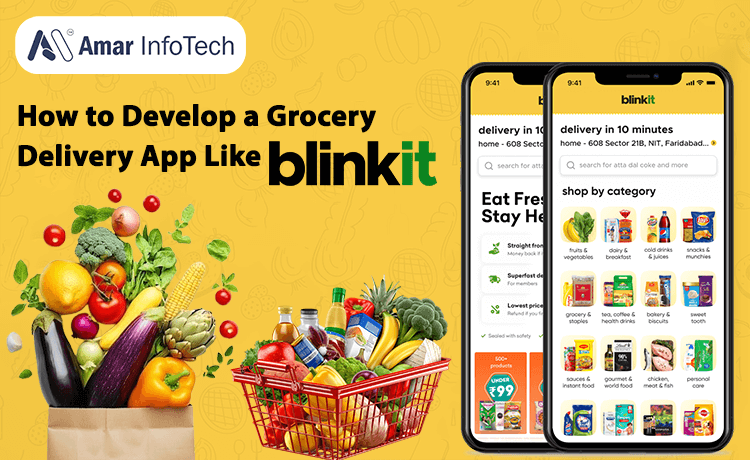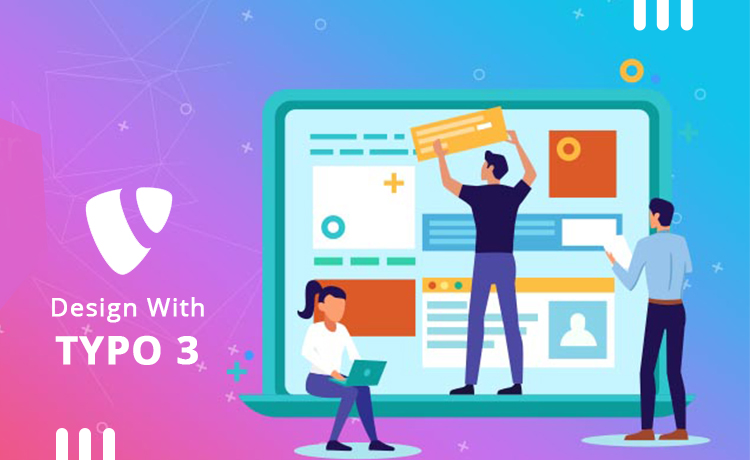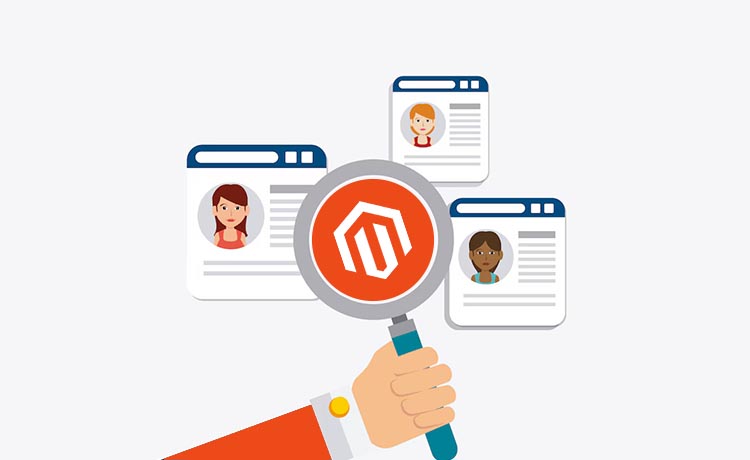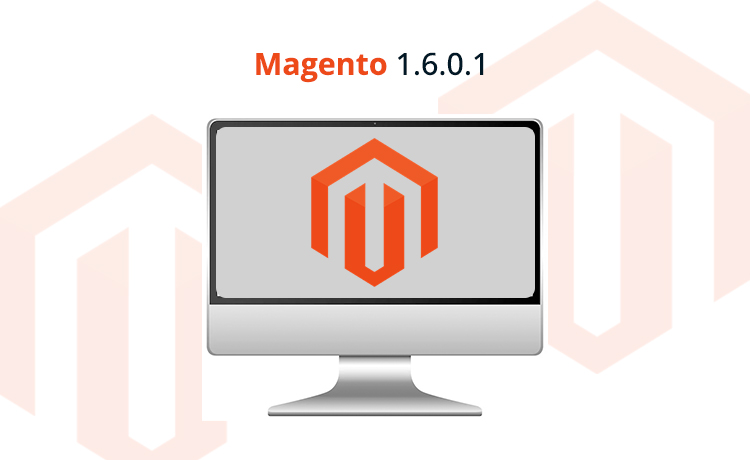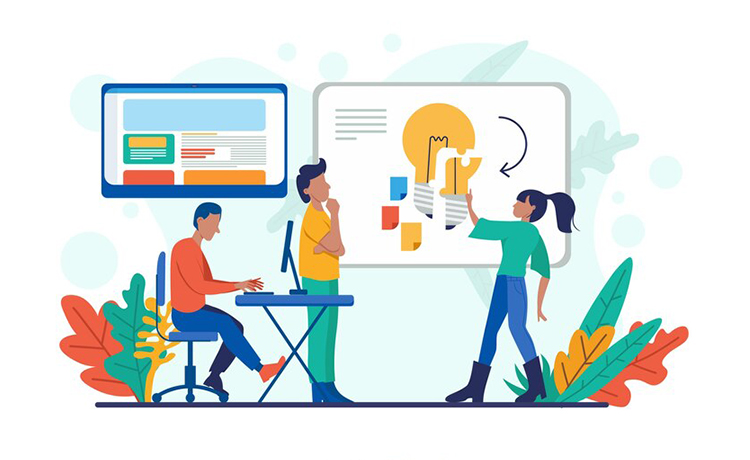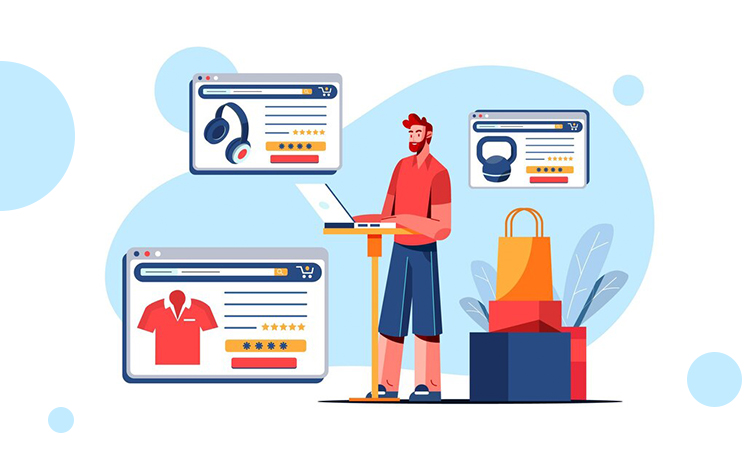Grocery shopping has been a tedious and dull task for ages. The hassle of visiting multiple stores to find all the necessary items, waiting in long queues to pay, and transporting them home can be quite frustrating. However, with the emergence of grocery delivery apps like Blinkit, shopping for groceries has become effortless and convenient.
If you're looking to build a Blinkit Clone App Development solution or a MilkBasket Clone App Development, our expertise can help you create a seamless and efficient grocery delivery platform. These apps ensure hassle-free shopping by offering quick deliveries, easy payments, and a smooth user experience.
Blinkit App is one such grocery delivery app that has revolutionized the online grocery shopping industry. It offers a wide range of products, including fresh fruits and vegetables, dairy products, packaged foods, and household essentials. The app has gained immense popularity in India, where it is estimated that the market for online groceries will be worth Rs. 396 billion by 2022.
Develop an App Similar to Blinkit and More
We specialize in creating applications that provide a seamless shopping experience similar to Blinkit. Below is a list of comparable platforms we can develop:
- ZepTo
- InstaMart
- Milk Basket
- BB Daily
- Big Basket
- QuickCart
10-Min Grocery Delivery!
ZepTo offers rapid delivery of everyday essentials, ensuring customers can access their necessities without the wait.
Instant delivery for your convenience!
InstaMart focuses on fast grocery delivery, providing users with a hassle-free shopping experience right at their fingertips.
Fresh milk and essentials, delivered daily!
Milk Basket specializes in delivering fresh milk and daily essentials straight to your door, ensuring quality and convenience.
Daily essentials at your doorstep!
BB Daily offers a reliable service for delivering daily grocery needs, helping customers save time and effort.
Everything you need, just a click away!
Big Basket is one of the largest online grocery platforms, offering a wide range of products delivered right to your home.
Shop smart, shop quick!
QuickCart provides an easy-to-use platform for fast grocery shopping, focusing on user-friendly navigation and speedy delivery.
With the emergence of fast commerce (Q-commerce), where companies like Zomato acquired Blinkit a Quick commerce guarantee immediate supermarket delivery within 10 minutes or less, online grocery buying is expanding even further. Delivery times can range from 10 to 30 minutes depending on where you are, yet occasionally purchases are delivered in as little as 7-8 minutes.
Customers who formerly frequented their local Kirana stores have started using on-demand applications to purchase groceries and other convenience products. 130 million online-transacting homes were predicted to make up the potential addressable market for local e-grocery providers as of 2020, according to a RedSeer consulting report.
Why do 10-minute instant grocery delivery services need to exist?
Businesses are focusing on quick transactions because consumers’ preferences and buying behaviors have changed from value-seeking to convenience-seeking, leading to smaller, more frequent purchases rather than larger, more frequent ones.
Due to its frequent use, high consumption, and user demand, which primarily targets middle- and upper-class customers, businesses have concluded that Q-Commerce is the way forward in the FMCG market.
When you are throwing a party at home, are short on some necessary things, or are returning home after a long day and need to prepare supper for your family but don’t have all the ingredients on hand, instant grocery delivery can be helpful. In these circumstances, ordering while traveling is helpful.
What allows for 10-minute Instant Grocery Delivery?
Companies have dark storefronts every 2-3 kilometers of the targeted areas. Companies employ dark establishments as fulfillment centers to keep their merchandise because they lack storefronts.
To operate and maintain these storefronts, the internet delivery companies typically work in collaboration with local retailers. All the groceries you see on the app before placing an order are available in these tiny stores, which are based on your neighbourhood.
After receiving your order, the fulfillment team rapidly prepares it before giving it to the delivery person. According to Blinkit App, there are 300 dark retailers in its network.
What are the advantages of using Blinkit (Quick Commerce)?
- User-friendly app:
- Fast and convenient delivery:
- Wide range of products:
- Competitive prices:
- Blinkit Grocery Coupon Codes & Offers
The Blinkit app has a straightforward UI that makes it simple for users to find what they're looking for and quickly complete their purchases.
Blinkit's delivery service is incredibly quick and easy, making it a great choice for customers who are pressed for time and need their groceries delivered right away.
The company provides a variety of goods, including fresh vegetables, household needs, and other goods, allowing clients to find all they require in one location.
Blinkit App has affordable prices for all of its products, making it a fantastic choice for consumers watching their budgets.
To make the experience even better for its users, Blinkit App occasionally offers coupon codes and exciting deals on its services. Customers can take advantage of these offers to get discounts on their orders, free deliveries, and other perks.
Blinkit App Business Model – How it Works
Delivering goods in less than 10 minutes is the basic concept of the Blinkit business strategy. In order to deliver food and other necessities in the local communities, Blinkit has partnered with local companies and brands, logistics, warehouses, and payment partners.
Local mom-and-pop establishments have joined with Blinkit to showcase and sell goods through the Blinkit app. To sell via the app, these retailers don't need to spend money on packing or transportation. These stores receive last-mile delivery services from Blinkit, which boosts revenue and sales from the surrounding areas.
Due to the enhanced visibility, partner stores receive more orders, and Blinkit makes money by charging a commission based on a portion of these sales. Blinkit's commission to the merchant runs from 8% to 15% for transactions under Rs 700, and from 12% to 15% for orders under Rs 1000. Blinkit also charges the consumer a delivery fee if the order is under Rs 250.
Blinkit also offers logistics support and targeted placement on marketing materials that could aid in bringing in clients from a variety of demographics, which could help firms become more well-known.
A further revenue stream for Blinkit is advertising. Businesses who want to advertise to Blinkit's substantial user base can purchase space on the site. These advertisements could be banners, suggestions for products, or even videos. Lastly, Blinkit also profits from joint ventures with banks, credit card firms, e-Wallet providers, etc.
Future of Blinkit App like rapid delivery apps
Amar Infotech, an eCommerce development company in India, reports that the value of Quick-commerce in India was estimated to be $0.3 billion in FY2021. It is projected that by 2025, Quick-commerce will grow significantly to reach $5 billion and cater to 20 million Indian households.
Industry insiders claim that q-commerce is one of the most rapidly expanding e-commerce platforms, satisfying customers' demands for quicker delivery and displacing conventional kiranas with q-commerce platforms.
Blinkit App has raised almost $800 million in investment, and Zomato purchased Blinkit in June 2022 for $568.1 million in an all-stock transaction.
More and more companies are looking to implement this kind of technology as q-commerce expands quickly.
As a result, company owners will have a fantastic chance to create their own delivery applications and enter the on-demand grocery delivery market.
Why Would You Want to Create an App for Instant Delivery?
- Increased need for fast delivery:
- Potential to enter new markets:
- Improved customer retention:
- Enhanced productivity:
As consumers grow acclimated to the convenience and speed of such services, there is an increased demand for instant delivery services.
By using a 10-minute grocery delivery service like Blinkit, you can tap into new markets that traditional delivery methods may not reach. Launching a daily grocery delivery app allows you to cater to customers seeking fast and convenient grocery solutions.
By offering a superior service that is quick and easy, an immediate delivery software like Blinkit can assist you in increasing client retention.
By cutting down on the time and expense involved with conventional delivery methods, a quick food delivery software like Blinkit can help you improve the productivity of your company.
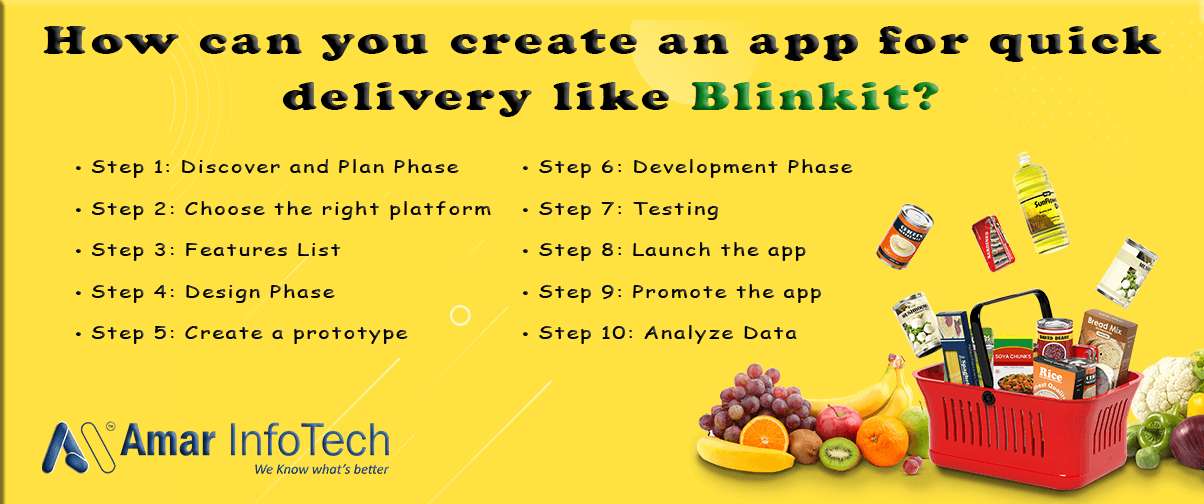
How can you create an app for quick delivery like Blinkit?
It's not difficult to create an app like Blinkit, but you need the necessary tools and knowledge. You can create a 10-minute grocery delivery app that is just as good as Blinkit with the help of this step-by-step tutorial.
For a better idea of mobile app design and features, anyone can check out the Blinkit mobile app, which is currently available on both Google Play Store and Apple Store.
Everything will be covered, including picking the best platform, developing the app, and deploying it. By the time you finish reading this manual, you will be fully equipped to develop your own fast delivery software and advance your company. Let's get going!
Step 1: Discover and Plan Phase
- You must first decide on a market for your app. What kinds of goods or services are you hoping to provide? What requirements does this market have that are not being satisfied by the current companies? What do competing companies in this industry do well? While you start to develop your own app, this study will be essential.
- The next step is to develop a business model for your app. How will you generate income? There are a few different solutions available here, but it's crucial to pick one that will be viable in the long run.
- Find the right partner: An on-demand delivery app's development is a time-consuming and expensive procedure. Finding the best partner to assist you with app development would be ideal. They should be able to give you a competitive price and have experience creating apps that are similar to yours.
Following the discovery phase, you must plan and make decisions regarding a number of crucial elements.
Step 2: Choose the right platform
Selecting the appropriate platform is the first and most crucial factor. You can create either a hybrid app or a native app. It's critical to consider which option would be ideal for your company because each offers advantages and downsides of its own. Apps that are native to one platform, like iOS or Android, are often created.
On the other hand, cross-platform apps can be utilized on various platforms and are created using HTML, CSS, and JavaScript. Though often more expensive than platform-independent app development, native app development produces apps that function better. On average, developing cross-platform apps is less expensive but takes a little longer.
Step 3: Features List
Once you have chosen the business model you will employ, you must think about the features the app should offer. To make your app stand out from the crowd, one of the greatest methods to achieve this is to investigate your competitors, enhance their current capabilities, and add some special features not found in other delivery apps.
Here are a few things to consider: –
- A user-friendly interface:
- Simple Registration:
- Avoid using jargon or technical phrases, streamline the registration procedure, and make it simple for customers to join up for your app.
- To make your app more aesthetically pleasing and user-friendly, use high-quality photos.
- Use an intuitive design; your app should be simple to use and have a clear, unambiguous layout.
- GPS Tracking:
- Order management:
- Payment gateway integration:
- Real-time order tracking:
- Push notifications:
- Multi-language support:
- Compatibility:
- In-app Chat:
- Location-based tracking:
- Rating and review system:
- Social media integration:
The app's design should be simple enough for even new users to grasp and use.
One of the key components of every delivery app is GPS tracking. Customers are given an estimated arrival time and the ability to follow the location of their order in real-time. Additionally, it lets dispatchers keep track of all orders being delivered and gives drivers the ability to see where they need to travel next.
Any delivery app's brain is the order management system. It must keep track of all orders placed, allocate them to drivers, and monitor their progress.
Users would be able to pay for their orders in this way using a range of payment methods, including credit/debit cards, net banking, and e-wallets, whether they place their orders online or through the app.
To know when their order will be delivered, customers should be able to track it in real-time.
Customers are notified via push notifications when there are significant changes to their order, such as when it has been picked up, is on the way for delivery, or has been delivered. They can also be used to advertise exclusive deals or savings.
The app should be provided in a variety of languages so that users can access it in the tongue with which they are most familiar.
So that as many people as possible may use the app, it should be compatible with all devices.
The application must include a chat option so that users may speak with the delivery representative in case of any problems.
Users would be able to observe drivers who are close by and follow their movement as they approach the user's location.
Users would be able to rate and review products thanks to this.
You may reach a larger audience and increase word-of-mouth advertising by enabling users to post reviews of your app on social media.
In order for on-demand grocery delivery apps to function properly, data analytics are essential for supply chain management, customer service, reporting, and insights.
Step 4: Design Phase (App interface design, U/X design, Database design)
Since it will be one of the first things that potential customers see, the design of your app is crucial. You must make sure the design is polished and simple to use. This entails creating an app with a simple, user-friendly layout and instructions that are clear and to the point.
Choose the layout, font, and color scheme for your app's overall look and feel. The best course of action would be to think about hiring a group of designers with expertise in developing mobile app designs.
Step 5: Create a prototype
The next stage is to make a prototype after you have the design figured out. You may see how the app will appear and operate by doing this. You can test out the features you wish to add to the app with its assistance. You may then check the app is feasible and gather feedback from potential users.
Step 6: Development Phase
Starting development is the next stage after creating a prototype. You must code the app at this point to make sure it functions properly. Here is a brief description of how software is developed:
- App architecture:
- Develop the front-end:
- Develop the back-end:
The app architecture is a structural diagram of how the components of your online grocery app will be put together and how they will work together to satisfy user or business needs. The application architecture helps to discover functional gaps and guarantees that programmes are scalable and reliable.
The front-end, or "client side," of the app—the component that users see and interact with—is where the coders translate the vision and design concept into the buttons, links, and animations that make up the front-end. Apart from Dart in Flutter Mobile App Development, React, Python, etc., this is primarily done with HTML, CSS, and JavaScript.
The 10-minute grocery app's back-end would need to be constructed in order to handle server-side tasks including data storage, security, site performance, and other server-side operations.
Step 7: Testing
To ensure there are no problems or faults, the software must undergo extensive testing before being released. This is crucial since it will enable you to fix any issues or kinks that the app may have. Use a simulator or test it on a real device to accomplish this.
Step 8: Launch the app
You must release your app on the App Store and Google Play Store once it has been tested and is ready to use. People can download and use your app from this location.
Step 9: Promote the app
To raise awareness, you must market your app. To encourage people to use your app, you'll need to develop a solid marketing plan. Campaigns in marketing and public relations, social media, paid advertisements, etc., can accomplish this.
Step 10: Analyze Data
Following the launch of your app, it's critical to monitor user behavior and conversion rates. Over time, this will enable you to enhance your software.
Finally, you must keep supporting and updating your app. This entails making sure that flaws are routinely addressed and new features are incorporated.
Preferred Technology Used for a Blinkit (Q-Commerce) Instant On Demand App
The following technological stack is required to create an immediate delivery app similar to Blinkit:
- Programming Languages: Swift (for iOS apps) or Java (for Android apps)
- Database: MySQL, MongoDB, Couchbase, Cassandra
- Server-side Framework: Node.js or Laravel
- Client-side Framework: AngularJS or ReactJS
- Payment Gateway: Stripe or PayPal
- Cloud provider: Amazon Web Services, Google Cloud Platform, and Microsoft Azure
- Maps and Navigation: Google Maps or Apple Maps
- API gateway: Kong, Express Gateway
- Message queue: Kafka, RabbitMQ
- Search engine: Elasticsearch
- Machine learning: TensorFlow, MXNet, Scikit-learn
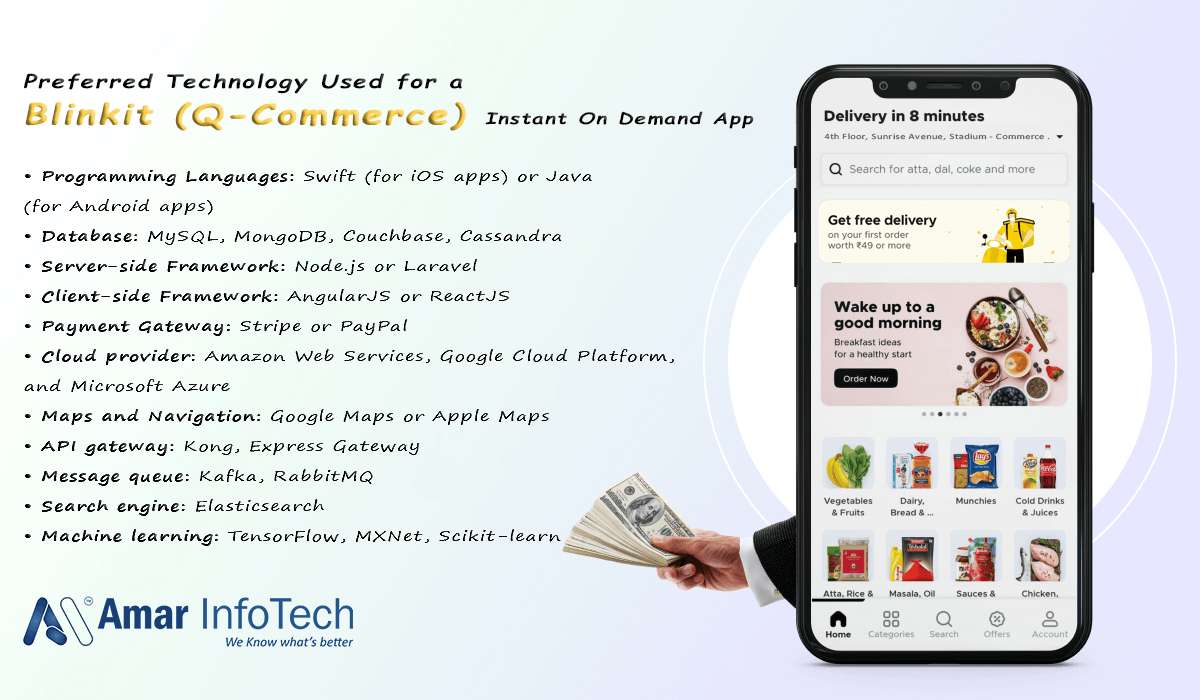
How much does it cost to create a Blinkit-like app?
The price of developing an app relies on a number of variables, including its features, platform, length of development, etc. Here is a ballpark figure for the price of creating an app similar to Blinkit. Basic app with essential features- $5000 to $10000 Advanced app with more features- $15000 to $30000app with complex features- $40000 to $80000
Whether you want to create an iOS or Android app will affect the price. The price of developing an app also depends on the nation you choose to outsource the work to. The cost would be considerably less if you outsourced the development to an underdeveloped nation like India than if you outsourced it to a developed nation like the United States.
When developing an on-demand delivery software like Blinkit, certain additional expenditures must be taken into account. These consist of:
- The price of hosting and keeping the application updated on a server. This can vary based on the size and complexity of the app from $100 to $500 every month.
- The price of getting the app's domain name. Typically, this would cost $10 a year.
- The price of attracting clients through promotions and advertising. Depending on the campaign's budget and aims, this can vary significantly.
- The price of giving drivers a commission for each delivery they make. Typically, this is 10% of the overall order amount.
Given all of these considerations, it would cost between $5,000 and $10,000 to construct a 10-minute supermarket delivery app similar to Blinkit. Please keep in mind that this is simply a ballpark figure. Depending on the particular needs of the project, the real cost can be greater or lower.
Time spent developing the app step-by-step
An on-demand delivery app's development can be roughly divided into three phases:
- Phase of design and planning:
- Phase of development:
- Phases of testing and launch:
This is the first stage, during which the app's architecture and features are finalized. Usually, 2-4 weeks pass.
During this time, the developer builds the app in accordance with the design blueprints. Usually, it takes 4 to 8 weeks.
After development is finished, the app needs to be examined for errors and performance problems. This stage normally lasts two to four weeks.
Why Build an App like Blinkit with Amar Infotech?
Leading on-demand mobile app development company Amar Infotech has years of experience creating profitable on-demand apps. We have a group of skilled developers who are knowledgeable about current trends and technology. In addition, we provide a wide range of services, such as designing and marketing apps as well as developing apps on demand. For our clients all across the world, we have created a number of effective on-demand delivery apps.
Hiring mobile app developers from Amar Infotech is the smartest move you can make for your company if you're looking to build an on-demand delivery software similar to Blinkit App. With our expertise, we are fully aware of the challenges involved in developing such software and have the necessary know-how to overcome them. Contact Amar Infotech today and let us help you build the perfect app for your business.
Conclusion
Building an app similar to Blinkit is an excellent approach to enter the expanding Indian q-commerce market. You can have a dependable, scalable, and user-friendly custom app designed with the aid of Amar Infotech. To begin, get in touch with us immediately.
